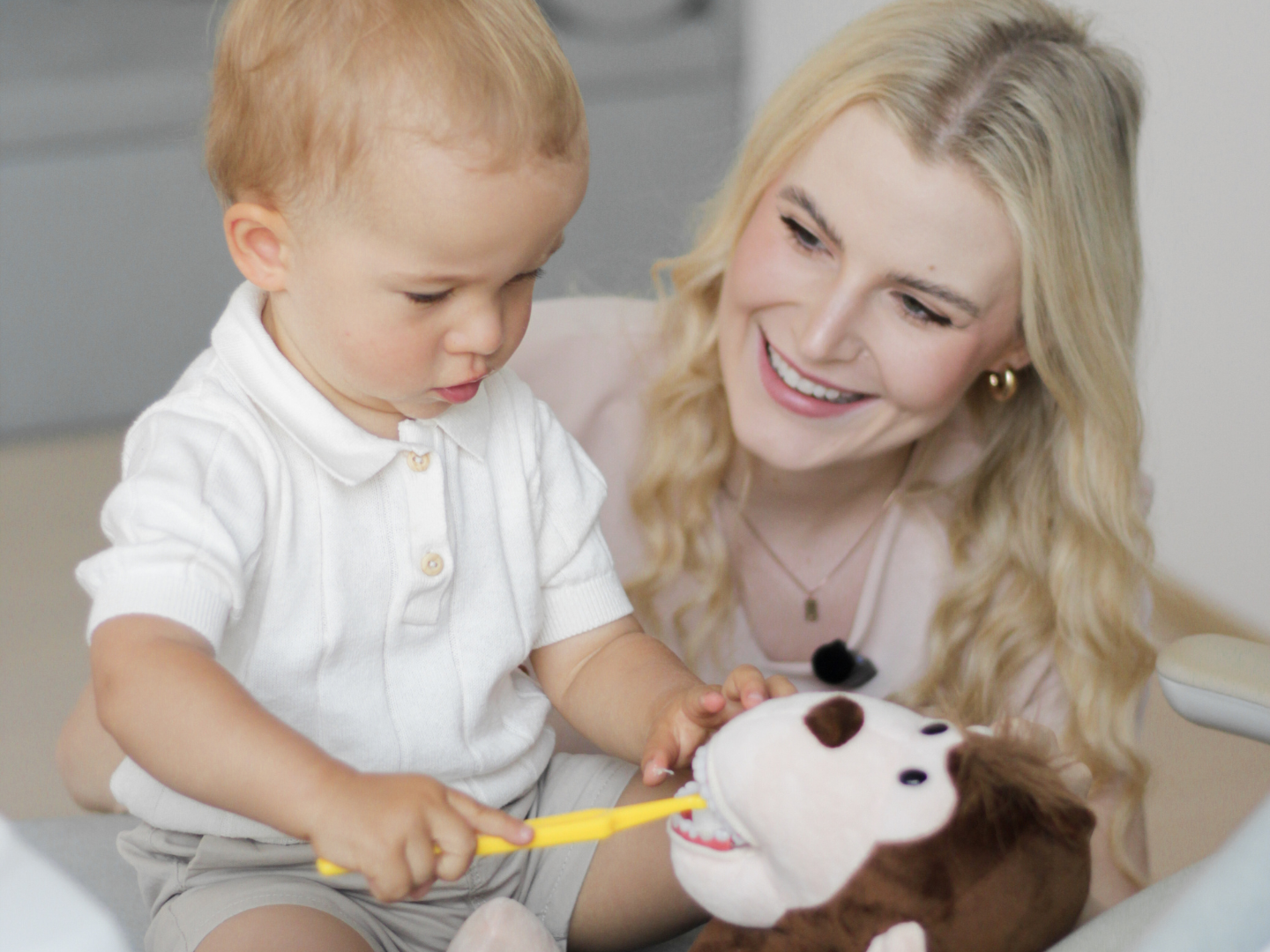We start right away with the first tooth.
As soon as the first white tooth appears in the mouth, we clean it like our own teeth. For the very beginning, a soft finger or a piece of gauze is sufficient. As more teeth appear, we switch to a small children's toothbrush with extra-soft bristles – for example, the TePe Mini with an ergonomic handle for parents.
Why it works: Plaque is a sticky biofilm of bacteria and food residue – it forms within just a few hours . Children's enamel is thinner , so acids corrode it more easily and it starts to decay much faster.
Interesting fact: The first tooth often appears around the 6th month , but it's perfectly normal for it to appear earlier or later.
Pasta: a small amount makes a big difference
We start cleaning the first teeth without toothpaste .
In the period of 1–2 years The amount of paste should be like a grain of rice .
For children aged 2–5+ years, the recommended amount of paste is the size of a pea.
We teach children to spit out the toothpaste , not swallow it. You can choose either fluoride-containing toothpastes (recommended by pediatric dentists, e.g. Bob and Bobek ), or they can be fluoride-free if they contain active hydroxyapatite (e.g.Apadent Baby ).
Why it works:
- Fluoride promotes enamel remineralization .
- Hydroxyapatite is biomimetic – similar to the mineral that makes up the tooth, and can strengthen tooth enamel like fluorides.
Bonus tip: After brushing , just spit it out , don't rinse with water – this way the active ingredients work on your teeth longer.
Proper technique is fundamental (and children can't learn it on their own yet).
Use gentle circular motions , especially along the gum line where plaque tends to accumulate. Don't forget the outer, inner , and chewing surfaces of the teeth . For hard-to-reach areas, a single-tufted brush (e.g., TePe Tuft ) is excellent.
Brush your teeth for at least 1 minute, both morning and evening – experts recommend supervision and brushing until around 10 years of age . Children younger than that don't have the fine motor skills or motivation yet.
Interesting fact: Two minutes of brushing (morning and evening) is a small investment that significantly reduces the risk of cavities . Evening hygiene is the most important, and every parent should thoroughly clean their child's teeth, including using dental floss or an interdental brush.
Make cleaning a ritual that children look forward to.
Brush your teeth together in front of the mirror , use favorite stuffed animals as "patients," tell tooth fairy stories. Children enjoy it. Luminous sonic toothbrushes with cheerful friends. Children adopt behavior through imitation. When brushing becomes a game, it becomes a habit.
Bonus tip: Play your favorite two-minute song – when it's over, you're done.
Interdental spaces: small gaps, big risk.
Each tooth has 5 surfaces – and a toothbrush can't clean two of them. As soon as the first teeth erupt, they may touch each other . And this is where interdental care is needed. Start practicing with children's floss with a handle (e.g., Animal ). The interdental spaces are the most common place for cavities to develop – in children and adults alike.
Bonus tip: Start with 1 time per day in the evening . Just 20 seconds – but every day .
Mini-FAQ & Smart Habits
- When to go to the dentist? Ideally by the end of the first year of life.
- Sweet drinks and a bottle in bed? A big risk for cavities. Only water at night.
- Brush replacement: every 3 months or after illness.
- Bad breath in children? Most often it means there is kaz.
A quick "starter" routine for every day
- Evening: Thorough brushing (1 min), parent finishes brushing for 1 min , use toothpaste . Don't forget the interdental spaces: briefly floss between the teeth.
- Morning: thorough brushing (1 min), parent finishes brushing for 1 min , use toothpaste .
When care is simple, playful, and regular , children's teeth stay strong and healthy – and you stay calm. 😊


